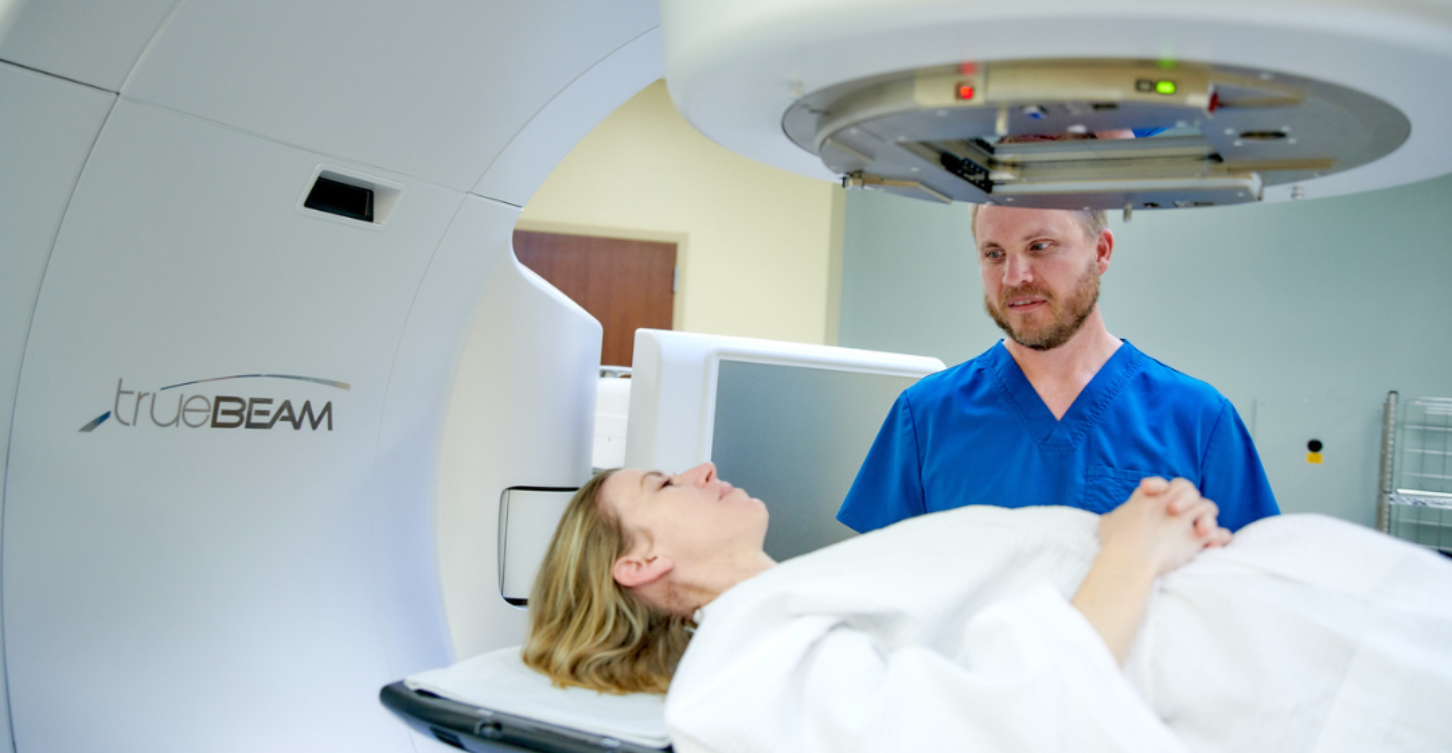
You sit down. They say it won’t hurt. You nod. But the room feels cold. The machine makes a sound you don’t recognize. No burning. No shock. Just light. Focused, exact. That’s what radiation therapy often is. Not dramatic. But daily. Built around repetition. Built to disrupt what doesn’t belong.
They begin by marking the body, not treating it
Before anything starts, measurements happen. You lie still. The team maps your position. Lasers cross your chest. They place small dots, sometimes tattoos. Not decoration. Coordinates. These marks help guide each session. They don’t change. You will return to the same spot tomorrow. And the day after. Consistency matters more than time.
CT scans become the blueprint, not the diagnosis
They take images again. Even if you had scans before. These are for planning. The radiation team needs angles, depth, shadows. They look at organs nearby. They draw shapes — tumor, tissue, bone. The scan doesn’t just show what’s wrong. It shows what needs avoiding. That difference defines radiation therapy.
You don’t feel the radiation during the session itself
You lie alone. The team steps out. Cameras watch. The machine starts to hum. Nothing touches you. You feel no heat. No sting. Just minutes passing. You breathe slowly. You hear beeps. Maybe music. Then silence. It’s over. But the effect doesn’t end there. It builds across days. Quietly.
They check alignment every time before delivery begins
Position matters. Even a shift by millimeters changes everything. They check angles. Use laser lines. Sometimes adjust the table. You hold your breath briefly. You don’t move. They watch from behind glass. If alignment fails, they pause. Accuracy isn’t optional. It’s the entire point.
Side effects don’t arrive immediately, but gradually over time
The first few sessions feel uneventful. You expect more. You wonder if it’s working. But radiation builds. Fatigue sets in slowly. Skin changes follow. Some redness. Maybe dryness. Internal effects depend on location. Mouth dryness. Sore throat. Loose stools. Not sudden. Always slow. That delay can be confusing.
They don’t always target the tumor directly
Sometimes, radiation isn’t aimed at the primary mass. It might go to lymph nodes. Or post-surgical areas. Even regions where microscopic cells might hide. This isn’t scattershot. It’s calculated. Based on patterns. On where cancer might travel. The goal isn’t only removal. It’s interruption.
Fractionation breaks the dose into many smaller pieces
You don’t receive everything at once. Radiation comes in fractions. Small doses, repeated daily. This helps spare healthy tissue. And catch cancer cells in vulnerable phases. Some protocols use 5 days a week. Others change based on type. Timing isn’t about convenience. It’s biology.
Machines vary depending on the type and location of cancer
Not all radiation looks the same. Linear accelerators for external beam. Brachytherapy for internal seeds. Proton therapy in specialized centers. Each tool changes the path and depth. That’s why two patients get different instructions. Different side effects. Same goal. Different road.
Some treatments require body molds or face masks
For stability, they may build a mold. You lie in it each time. Or they create a mask. Especially for head and neck radiation. The mask feels tight. But necessary. Movement ruins precision. These tools aren’t restraints. They’re guides. And they help keep everything unchanged.
You can’t bring radiation home — it doesn’t linger on your skin
After treatment, you’re not radioactive. You can hug. You can eat. You can ride elevators. Unlike nuclear medicine, external beam doesn’t leave residue. The energy is delivered. Then gone. People fear it unnecessarily. You carry nothing with you after each session.
You might see the same team every day, but only speak sometimes
Therapists run the machine. They know your name. Your position. Your breathing pattern. You don’t always talk. But they notice. If your skin changes. If you seem tired. The oncologist visits weekly. Asks questions. Makes adjustments. The rhythm becomes familiar. Quiet, but precise.
The goal isn’t always to cure — sometimes it’s to relieve
Radiation isn’t just curative. It’s also palliative. To shrink a tumor blocking an airway. To relieve bone pain. To ease pressure on nerves. These goals aren’t smaller. They’re different. Shorter courses. Lower doses. Faster results. The purpose is comfort, not permanence.
They stop treatment temporarily if your body shows distress
If side effects become too severe, they pause. Not stop forever. Just to give space. Skin might blister. Mucosa might break down. Or nausea becomes too strong. The pause helps repair. Then treatment resumes. Skipping a day isn’t failure. It’s protection.
The effects continue even after treatment ends
Radiation works beyond the last session. Cells die over time. Tumors shrink gradually. You feel tired weeks later. Imaging happens after a gap. Not instantly. Doctors wait. They watch inflammation reduce. Only then measure. That delay confuses patients. But it’s normal. The body needs time to respond.
Follow-ups track not just scans, but side effects and late symptoms
Post-treatment isn’t passive. You return for checkups. They ask about swallowing, skin, sleep. They run labs. Not just to track recurrence. But to monitor long-term effects. Radiation can scar. Narrow vessels. Affect hormone levels. These don’t appear early. They’re slow. That’s why follow-up lasts for years.
Radiation planning involves physicists, not just oncologists
Behind the curtain, physicists calculate doses. They map beam angles. They model tissue response. You never meet them. But their work shapes your plan. Without them, radiation would miss the mark. Oncology is teamwork. Even when the team is invisible.
Some cancers respond better than others — and that’s expected
Lymphomas shrink quickly. Prostate cancer responds gradually. Glioblastomas resist. That’s known. Not failure. Radiosensitivity varies. Genetics play a role. So do oxygen levels. Some tumors die easily. Others resist. Doctors don’t promise outcomes. They watch, adjust, repeat.
Source: Best Oncologist in Dubai / Best Oncologist in Abu Dhabi
